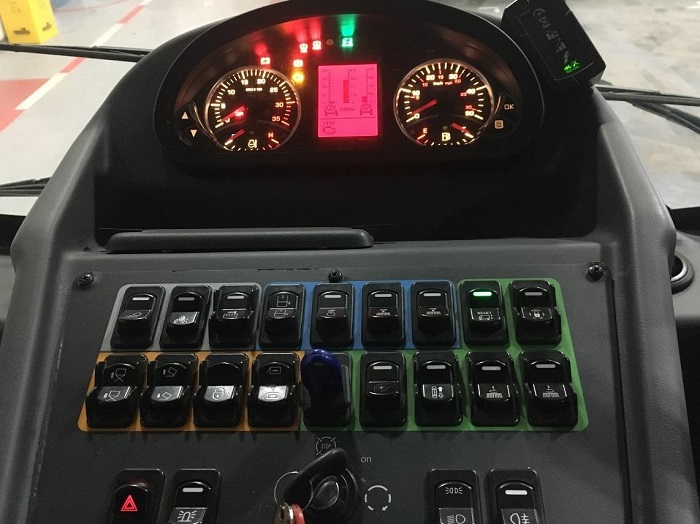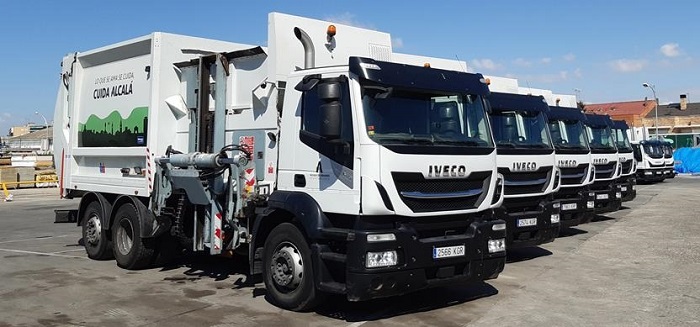Among its objectives, Valoriza Medioambiente aims to reduce the environmental impact of its activity and improve worker safety.
To that end, it equips its fleet with Chip2Chip software, a management and driving aid system that allows users to monitor key parameters to ensure safe, efficient driving.
Chip2Chip implementation was part of the fleet’s renewal process undertaken four years ago, the ultimate aim of which was to extend the useful life of the machinery and improve on the end-of-life condition of the previous fleet.
The project was launched with a European subsidy to implement the AENOR EA0050 standard (Efficient driving management system for industrial vehicles), which was obtained because the vehicles’ Euro 6 specification and the percentage of electric vehicles in the fleet permitted it.
The goal was to extend the useful life of the machinery and obtain savings on fuel and preventative/corrective maintenance at the same time.
Chip2Chip is a consultant and manufacturer of onboard equipment and USB keys (driver identification checks) that parameterize and improve driving. Its mobile app provides the real-time location data of each vehicle, to streamline and optimize the fleet’s routes.

“Efficient driving reduces fuel consumption and CO2 emissions. When there is an excess of predetermined values, the system sends an audible warning and a red light goes on,” explains Service Chief at Valoriza Medioambiente, Álvaro Gabriel Gómez.
“We just renewed the agreement with the client, the Alcalá de Henares City Council. There is currently a fleet of 70 vehicles, whose movements and actions are monitored. The data differs depending on the vehicle: container weight, average speed, etc. In addition, there is a scoring system that gauges whether a given driver is driving efficiently,” he continues.
Reports are subsequently prepared that detail trips, fuel consumption, and the movements of each driver within a specific period.
“Among the challenges that lie ahead is establishing a communications system between the vehicles of different shifts. It’s fully implemented in the fleet, now we want to improve route performance,” concludes Álvaro Gabriel Gómez.
